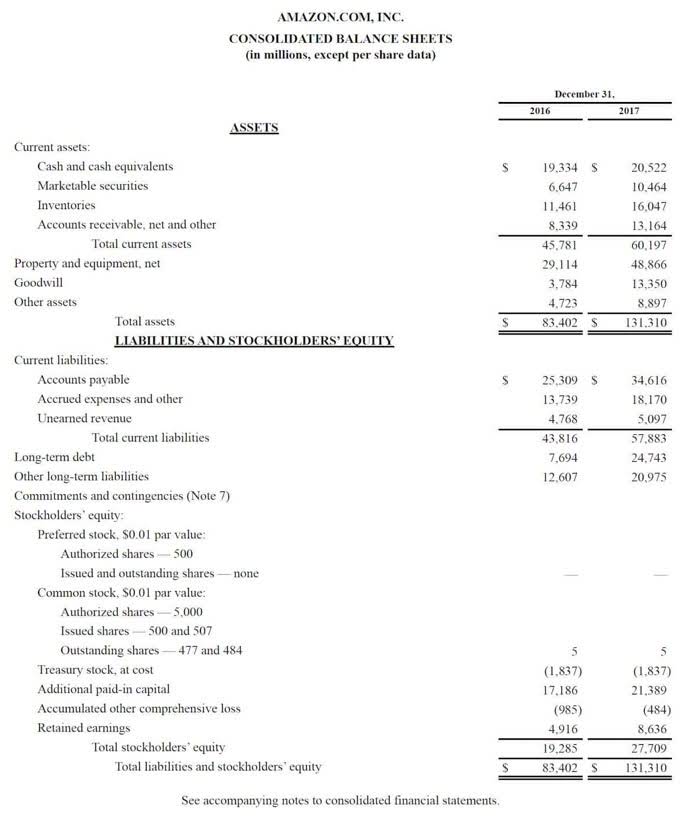Content
Step-nephew fucks her step-aunt
- Step-nephew fucks her step-aunt
- Step-nephew fucks her step-aunt
- Step-nephew fucks her step-aunt
Content
Step-nephew fucks her step-aunt
Förnuftigt gamblerande är en central ämne på casinovärlden, särskilt genom den rapida expansionen kring digitala spelsajter. Som angivet i en studie från Spelkontrollen 2023, har antalet inskrivna deltagare växt med 20% i det senaste året som gått, vilket gör att det betydelsefullt för att deltagare är informera kring riskfaktorerna liksom föreskrifterna kring spelandet.
En utav de tydligaste ledande rösterna inom ansvarsmedvetet spelande är Sweeney, en expert på spelberoende liksom vägledare till flera nätbaserade spelföretag. En har möjlighet att granska mer angående hennes verksamhet på hennes LinkedIn-profil.
För spela ansvarsmedvetet utgör det betydelsefullt att fastställa gränser angående både tidsperiod samt pengar. Många casinon tillhandahåller verktyg för hjälpa gammare i syfte att fastställa insättningsramar och tidsramar. Det är tillämpa de här hjälpmedel kan också reducera riskfaktorn kring för mycket gamblerande och stödja spelare för att bevara kontrollen. För mer mer fakta kring förnuftigt spelande, gå till New York Times.
Det är också betydelsefullt att vara insiktsfull om de olika slagen av spelande som erbjuds. Enarmade banditer, bordsspel och live dealer-spel har olika risknivåer och utfall. Att begripa dessa variationer kan hjälpa spelare att göra mer informerade val. Dessutom bör spelare alltid säkerställa att casinot har en giltig spellicens för att trygga en skyddad och rättvis spelmiljö. Du kan upptäcka mer upplysning om spellicenser på bästa utländska casino.
Sammanfattningsvis är ansvarsmedvetet spelande en viktig del av casinoupplevelsen. Genom att vara uppmärksam om hoten och utnyttja finnande verktyg kan spelare åtnjuta av en trygg och underhållande spelstund.
Son senelerde, canlı kumarhane şans oyunları, kumarhane endüstrisinde devrim yaratarak oyunculara gerçek anlık ve interaktif bir yaşantı sunmaktadır. 2023 tarihine göre, bu tip oyunların ünü %30 oran artmış ve evren genelinde 10 trilyon dolarlık bir pazar alanı oluşturmuştur. Canlı casino oyunları, oyuncuların gerçek dağıtıcılarla etkileşimde katılmalarını sağlayarak, geleneksel kumarhanelerin atmosferini evlerine taşımaktadır.
Evolution Gaming, bu husustaki en büyük şirketlerden biridir. Şirket, 2022 tarihinde 100’den fazla canlı şans oyunu sunarak alanındaki liderliğini sürdürmüştür. Evolution Oyun‘in CEO’su Martin Carlesund, şirketin inovatif yaklaşımıyla sektördeki büyümeyi yönlendirmektedir. Daha ek veri için onun LinkedIn profiline göz atabilirsiniz.
Canlı casino şans oyunları, genellikle yüksek kaliteli video aktarımı ve tecrübeli krupiyelerle desteklenmektedir. Bu seçenekler, oyunculara gerçek bir casino deneyimi sunarken, aynı anda sosyal iletişim seçeneği da sağlamaktadır. Oyuncular, sohbet odaları aracılığıyla diğer oyuncularla bağlantı kurabilir ve etkinlik sırasında stratejilerini paylaşabilirler. Bu şart, oyuncuların deneyimlerini geliştirmekte ve daha çok katılım sunmaktadır.
Canlı şans oyunu oyunları hakkında daha fazla malumat edinmek için Wikipedia web sayfasını ziyaret edebilirsiniz. Ayrıca, oyuncular güvenli bir deneyim yaşaması için resmi sistemleri tercih etmeleri değerlidir. Bu tür altyapılar, oyuncular kişisel ve mali malumatlarını korumak için gelişmiş emniyet önlemler almaktadır. Daha çok bilgi için x-slot
Sonuç şu açıdan, gerçek kumarhane şans oyunları, tekniklerin sunduğu olanaklarla sürekli olarak evrim görmektedir ve katılımcılara daha gelişmiş deneyimler sunmaktadır. Bu husustaki yenilikler, şans oyunu endüstrisinin geleceğini düzenlemeye devam sürecektir.

Because it uses only two data values in its calculation, variations in costs are not captured in the estimate. The manager of a hotel would like to develop a cost model to predict the future costs of running the hotel. Unfortunately, the only available data is the level of activity (number of guests) in a given month and the total costs incurred in each month. Being a new hire at the company, the manager assigns you the task of anticipating the costs that would be incurred in the following month (September). Another example of mixed cost is a delivery cost, which has a fixed component of depreciation cost of trucks and a variable component of fuel expense. When a company has a large fixed cost component, it must generate a significant amount of sales volume to have normal balance a sufficient contribution margin to offset the fixed cost.

The R-squared value indicates the goodness of fit of the regression model, reflecting how well the activity variable explains the variation in costs. By using accurately separated fixed and variable costs, CVP analysis provides a reliable roadmap for achieving profitability goals. As you can see, the accurate separation of fixed and variable costs is paramount for calculating a reliable break-even point. If fixed costs are understated or variable costs are overstated due to improper cost separation, the calculated break-even point will be inaccurate.

Remember, the interplay between fixed and variable costs shapes the financial health of any organization. The cost formula for a mixed cost is the sum of the variable and fixed components. As the name suggests, a mixed cost is made up of a mix of variable cost and fixed cost. By understanding the fixed and variable elements of a mixed cost, managers can identify areas where costs can be reduced. Other than the example above, during the normal course of business, there are How to Invoice as a Freelancer numerous examples of mixed costs that the company bears and pays.

Mixed Costs can simply be defined as costs that include both fixed and variable components. Therefore, they can best be described as costs that have a fixed component and a variable component. The best way to deal with mixed costs in a budget is to use a formula in place of a single number for a mixed cost, with the cost automatically varying based on a designated activity level (such as sales). This approach is more complicated, but yields budget figures that are more likely what is mixed cost to match actual results.
Suppose, a cost accountant says that in the total semi-variable cost, there may be a 30% fixed cost and 70 % variable cost. Such additional costs of manufacturing and selling are controllable with current activity. In contrast, capacity costs tend to continue regardless of the current rate of activity as long as the same capacity is maintained. Fixed costs are those who do not change .with the level of activity within the relevant range. Variable costs are inextricably linked to cost drivers.A cost driver is an activity that causes the incurrence of variable costs.
Understanding the cost behaviours of fixed, variable and step-fixed costs will improve business acumen. The next step is to learn how to seperate mixed costs for accounting purposes. Additionally, mixed costs play a role in evaluating outsourcing opportunities. A company might consider outsourcing certain operations if the variable component of the mixed costs is high, and external providers offer a lower variable cost alternative.

To find the variable cost per unit, one would subtract the total cost at the low activity level from the total cost at the high activity level, and then divide by the difference in activity levels. The fixed cost component can then be isolated by subtracting the total variable cost at either the high or low activity level from the total mixed cost at the same level. While this method is straightforward and easy to apply, it assumes a linear relationship between costs and activity levels and may not account for anomalies or outliers in the data. The inclusion of mixed costs in break-even analysis adds a layer of complexity. As these costs contain both fixed and variable elements, they must be accurately dissected before they can be applied to the break-even formula.
Live dealer casinos have attained immense fame in past years, supplying players with an captivating gaming encounter that merges the comfort of online gambling with the realness of a physical casino. According to a 2023 report by Statista, the live dealer segment is forecasted to expand by 25% each year, driven by developments in streaming technology and player desire for real-time interaction.
One prominent person in this industry is David Baazov, the ex CEO of Amaya Gaming, who played a crucial role in popularizing live dealer options. His foresight helped shape the online gaming environment, making it more immersive for players. You can learn more about his efforts on his LinkedIn profile.
In 2022, Evolution Gaming, a leader in live casino offerings, debuted a new location in New Jersey, expanding its services to cater to the increasing U.S. sector. This establishment allows players to experience a range of games, including blackjack, roulette, and baccarat, all hosted by skilled dealers in live. For more information on live dealer casinos, visit The New York Times.
Live dealer casinos utilize clear video streaming and multiple camera angles to create an engaging atmosphere. Players can engage with dealers and other players through chat functions, enhancing the social element of gaming. To improve your experience, consider exploring different platforms and their unique offerings at sultan games.
While live dealer casinos provide an exciting alternative to classic online gaming, players should ensure they are playing on certified and supervised sites. This guarantees fair play and defends personal information, enabling for a safe and enjoyable gaming encounter.
This is a sample post created to test the basic formatting features of the WordPress CMS.
You can use bold text, italic text, and combine both styles.
This content is only for demonstration purposes. Feel free to edit or delete it.
Artificial intelligence (AI) is transforming the casino field by streamlining operations and enhancing customer interactions. In 2023, a report by Deloitte pointed out that AI solutions could enhance operational effectiveness by up to 30%, permitting casinos to more effectively manage resources and improve service provision.
One distinguished figure in this industry is Matt Wilson, the CEO of Scientific Games, who has been key in embedding AI into gaming systems. His views on the future of gaming technology can be explored further on his company website.
In 2022, the Bellagio in Las Vegas deployed an AI-driven customer client management system that examines player conduct to present customized promotions. This system has culminated in a 15% rise in player retention levels, showcasing the effectiveness of AI in improving customer loyalty. For more details on AI in the gaming industry, visit The New York Times.
AI is also being employed to improve security strategies within casinos. Cutting-edge surveillance systems equipped with AI can detect suspicious activities in real-time, substantially reducing the threat of fraud and theft. Furthermore, AI algorithms aid in game creation, creating more captivating and vibrant gaming encounters for players. Discover more about these progressions at пинко казино.
As AI tech continues to develop, casinos must adjust to stay relevant. Understanding how to employ AI instruments effectively can lead to better operational effectiveness and boosted customer satisfaction. The prospects of casinos will possibly be influenced by these technological advancements, making it vital for industry stakeholders to accept AI solutions.
O organismo endereçou as condolências à família, amigos e ao clube, estando a deliberar cumprir um minuto de silêncio em memória de Adriano campeonato hóquei gulpilhares Silva em todos os jogos de Hóquei Patins disputados nos próximos dias 22 e 23. Será cumprido um minuto de silêncio em memória de o dirigente em todos os jogos de hóquei nos próximos dias 22 e 23… O Gulpilhares esteve perto de voltar à vantagem, com Rute Santos a acertar no ferro num lance de transição. No entanto, na jogada seguinte, Sofia Reyes assumiu novamente o protagonismo, ao passar por duas adversárias e finalizar com um remate enrolado, selando o resultado final em 3-2. No segundo tempo, ambas as equipas adotaram uma postura mais cautelosa, apostando em saídas rápidas para o contra-ataque, conscientes de que um erro poderia ser decisivo. O conjunto treinado por Miguel Fernandes abriu o marcador, por intermédio de Francisco Soares, mas o Gulpilhares reagiu e empatou um minuto depois.
Ana Fernandes iniciou-se muito cedo no hóquei em patins, aos dez anos. No CAB sempre jogou com os rapazes mas aproxima-se o dia de tomar decisões. Ana Fernandes tem propostas para rumar a outras paragens e para competir em campeonatos nacionais. Posso continuar no Académico e continuo a jogar com os rapazes no distrital. “Guardo a participação a vitória, principalmente, e o convívio entre as equipas, pois apesar de estarmos todas a competir pelo mesmo houve um convívio excecional fora do campo”. Por volta do quinto minuto da partida, Pol Manrubia atirou da linha do meio campo para o fundo da baliza do Gulpilhares.
A AD ‘Os Limianos’ sagrou-se esta tarde Vice-Campeão Nacional de Sub-23 de Hóquei em Patins ao empatar a um golo com o Gulpilhares, em jogo da 14.ª e última jornada do Campeonato Nacional de Sub-23 masculinos. O Gulpilhares teve uma oportunidade de aumentar a vantagem, mas Ana Fernandes desperdiçou um livre direto.
Ana Fernandes concilia a prática de hóquei patins com os estudos, vai para o 10º ano e tem como referências as avançadas Marlene Sousa e Maria Sofia Silva, ambas do SL Benfica. Contextos de treino e competição que dão experiência à jogadora. A jogadora natural de Bragança confessa que ser campeã nacional é uma sensação indiscritível e única.
.jpeg)
A reação não podia ser mais positiva e em pouco meses conseguiu ganhar o seu espaço. Porque queremos fazer a diferença não estamos à espera que a notícia nos chegue feita, queremos mais, queremos dar a voz aos protagonistas, visibilidade aos clubes, associações e às próprias modalidades. A equipa barcelense termina o campeonato com uma vitória pro 4-7 frente ao CD Póvoa. O Benfica, com mais posse e mais adiantado no terreno, não criava muitas oportunidades e as situações que apareciam eram resolvidas por Rui Gomes e os seus companheiros de equipa.
Rodrigo Vieira – O jovem guarda-redes encarnado mostrou ser uma boa alternativa ao capitão Pedro Henriques. Apesar da diferença de forças, o Gulpilhares conseguiu criar perigo e Ricardo Vieira teve várias intervenções a bom nível, mesmo a “frio” pôs o Benfica a passar mais tempo no ataque. Ao décimo golo, os encarnados voltaram a abrandar e repartiram o domínio e a posse com a equipa da casa. Adriano Silva, presidente do Gulpilhares, da segunda divisão de hóquei em patins, morreu esta madrugada, vítima de doença prolongada, anunciou esta segunda-feira a Federação de Patinagem de Portugal. Depois do golo e até ao final, seguiram momentos de grande emoção, com ambas as equipas a jogarem com menos cabeça e mais coração. O Desportivo do Minho não é uma utopia…a ideia tem muitos anos, foi ganhando raízes ao longo do tempo e a falta no mercado de um órgão de comunicação social que dê destaque às modalidades reforçou-a.
A sensação de ser campeã é nova para mim, ainda mais ser campeã nacional em femininos num campeonato que se realizou pela primeira vez. Em campo estavam duas das equipas Compra de giros gratis: accede al modo dulce sin esperar ainda com aspirações no segundo lugar, o Limianos ao empatar assegurou o título de Vice-Campeão. No plano desportivo, o Gulpilhares, que já militou na primeira divisão portuguesa de Hóquei Patins, encontra-se no sexto lugar da Zona Norte da segunda Divisão, após sete jornadas.
O Desportivo do Minho é o resultado de vários anos na área do jornalismo desportivo. Durante 20 anos trabalhei num jornal diário regional, que tinha uma forte componente desportiva, colaborei com jornais regionais e nacionais de desporto. Fui jornalista numa altura em que os jornais procuravam as notícias, iam aos locais, e tinham uma política de proximidade com a comunidade do desporto.
W ostatnich latach sztuczna inteligencja (AI) zaczęła odgrywać kluczową rolę w przemyśle kasynowym, wprowadzając innowacje, które zmieniają sposób, w jaki gracze korzystają z gier. W 2023 roku, według raportu Deloitte, zastosowanie AI w kasynach online wzrosło o 30%, co przyczyniło się do poprawy doświadczeń graczy oraz zwiększenia efektywności operacyjnej.
Jednym z pionierów w tej dziedzinie jest firma Playtech, która wykorzystuje AI do analizy zachowań graczy i personalizacji ofert. Można dowiedzieć się więcej o ich innowacjach na ich stronie internetowej. Dzięki algorytmom uczenia maszynowego, kasyna mogą lepiej zrozumieć preferencje graczy, co pozwala na dostosowanie gier i promocji do ich potrzeb.
W 2024 roku w Las Vegas odbędzie się konferencja poświęcona zastosowaniom AI w branży gier, gdzie eksperci będą omawiać przyszłość technologii w kasynach. Wydarzenie to ma na celu wymianę doświadczeń oraz prezentację najnowszych rozwiązań, które mogą zrewolucjonizować sposób, w jaki gracze korzystają z usług kasyn. Więcej informacji na temat AI w grach można znaleźć na stronie Wikipedia.
W miarę jak technologia się rozwija, kasyna muszą również zwracać uwagę na bezpieczeństwo danych graczy. Wprowadzenie zaawansowanych systemów zabezpieczeń oraz regulacji dotyczących ochrony danych osobowych staje się kluczowe. Gracze powinni wybierać tylko licencjonowane platformy, aby zapewnić sobie bezpieczeństwo i uczciwość gier. Można znaleźć więcej informacji na ten temat na stronie mostbet casino.
Podsumowując, sztuczna inteligencja ma potencjał, aby znacząco wpłynąć na przyszłość gier hazardowych, oferując graczom bardziej spersonalizowane i bezpieczne doświadczenia. Warto być na bieżąco z nowinkami technologicznymi, aby w pełni wykorzystać możliwości, jakie oferuje nowoczesny przemysł kasynowy.
Nuo pat jų atsiradimo paskutinėje 19-oje eroje lošimo automatai patyrė nepaprastų pokyčių. Pirmąjį mechaninį lošimo automatą, žinomą kaip „Liberty Bell“, 1895 m. sukūrė Charlesas Fey’us. Šis išradimas padėjo pagrindą šiuolaikinei žaidimų sričiai, o šiandien lošimo automatai sudaro maždaug 70 % kazino pajamų visame pasaulyje.
Aštuntajame dešimtmetyje skaitmeninių lošimo automatų debiutas pakeitė žaidimus. Šios mašinos leido žaisti sudėtingesnį žaidimą ir integruoti įvairias temas bei funkcijas. Viena žymiausių šioje pažangoje besivystančių įmonių yra IGT (International Game Technology), kuri 1976 m. išleido geriausią vaizdo lošimo automatą „Fortune Coin“. Daugiau apie jų kūrybą galite sužinoti jų svetainėje.
Tobulėjant technologijoms, internetinių kazino atsiradimas dešimtojo dešimtmečio pabaigoje įvedė naują laikotarpį lošimo automatams. Dabar žaidėjai galėjo mėgautis savo mėgstamais žaidimais patogiai savo namuose. Remiantis Statista tyrimu, tikimasi, kad internetinių žaidimų rinka iki 2027 m. pasieks 127 milijardus JAV dolerių, o nemaža dalis bus skirta internetiniams lošimo automatams. Norėdami gauti daugiau informacijos apie internetinių lošimų aplinką, apsilankykite The New York Times.
Šiuolaikiniuose lošimo automatuose dabar yra HD grafika, patrauklūs garso elementai ir dinamiški papildomi raundai, skatinantys žaidėjų įsitraukimą. Be to, daugelis kazino prideda laipsniškus jackpotus, kurie gali pakeisti gyvenimą. Tiems, kurie domisi lošimo automatų optimizavimu, labai svarbu suprasti grąžos į žaidėją (RTP) procentą ir pasirinkti žaidimus su padidintais RTP rodikliais.
Sektoriui toliau tobulėjant, žaidėjai turėtų būti informuoti apie naujausias lošimų žaidimų tendencijas ir technologijas. Sužinokite daugiau apie jaudinantį lošimo automatų pasaulį apsilankę Vox Casino